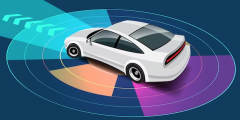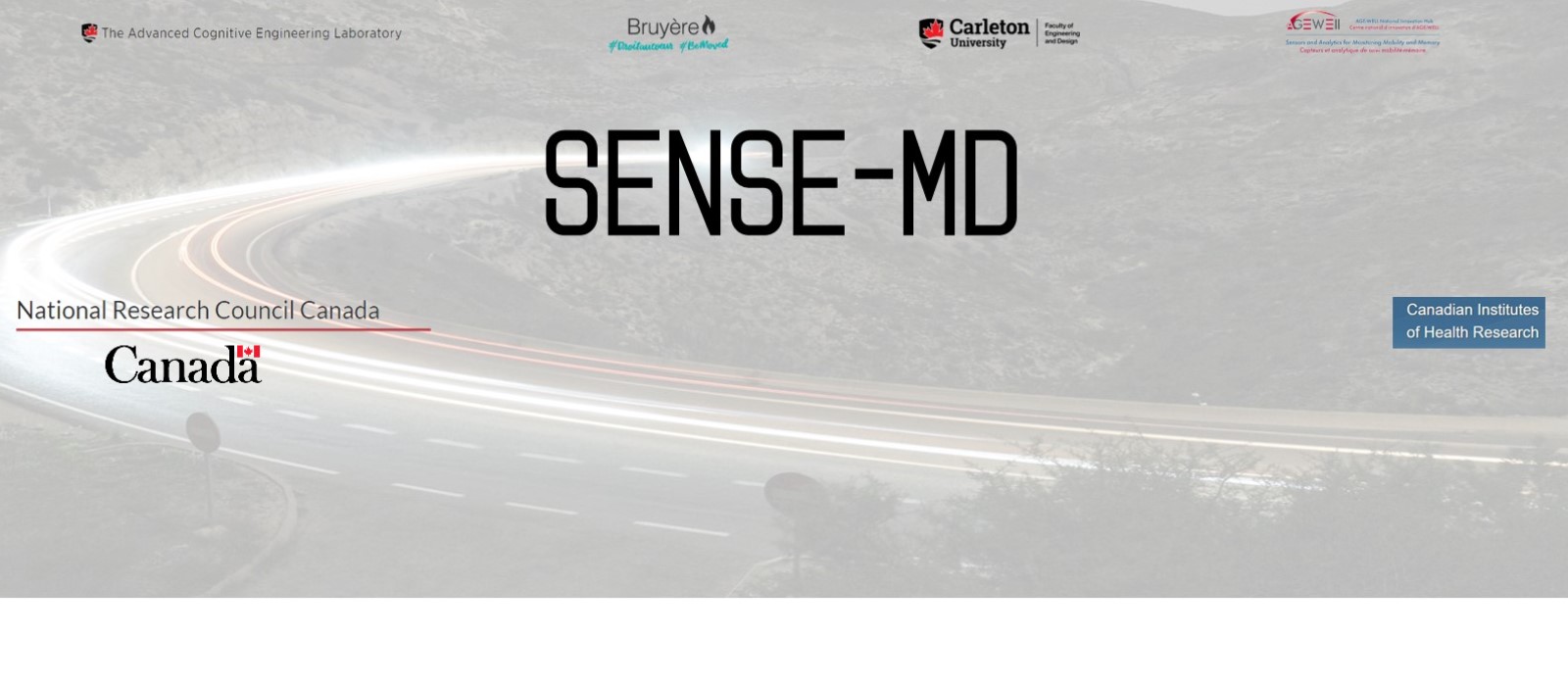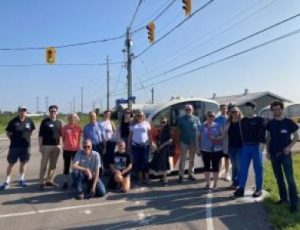Welcome to the SENSE-MD Project Information Hub!
Sensor Networks for Safe and Engaged Mature Drivers (SENSE-MD)
Discover the SENSE-MD Project: Pioneering Innovations for Safer Mature Driving
 SENSE-MD is an innovative and interdisciplinary project that brings together researchers from cognitive science and engineering, as well as researchers working with older drivers in clinical settings.
SENSE-MD is an innovative and interdisciplinary project that brings together researchers from cognitive science and engineering, as well as researchers working with older drivers in clinical settings.
The SENSE-MD Project is funded via the National Research Council (NRC) of Canada’s Aging in Place challenge program and the Canadian Institutes of Health Research (CIHR) Institute of Aging.
Follow this link for the NRC-CIHR Announcement
Project Objectives
This project aims to:
- Support Canadians to continue driving for as long as safely possible
- Create Smart AI programs by using information that we collected from mature Canadian drivers and from their car sensors
- Test algorithms using driving simulators and by driving on a closed track with semi-autonomous vehicles.
- Explore methods for providing drivers with information about their driving safety trends.
- Use car sensors to collect and interpret information on driver safety. Mature drivers and members of their driver safety team (DST) can access this information in real-time.
Project Methods – How We Will Achieve Our Objectives
The SENSE-MD project will use two driving datasets to predict driver risk: CAA and CIHR CanDrive. We will confirm the accuracy of these predictions with driving simulators and on-track driving. The goal of this project is to help mature drivers and their driver safety team (DST) to better work together. To make this collaboration easier, drivers will receive feedback that includes information about how safely they are driving. This feedback will provide information about their driving trends, both at the moment and over time.
The CAA dataset contains driving data from over 30,000 different drivers and the CanDrive includes more than 1,000 drivers. These datasets are a unique opportunity to look at different aspects of driving and to understand driver safety. We will make predictions using information collected with car sensors, driver health, and events (such as collisions). These statistical predictions will allow for a better understanding of the collected data.
The work will explore other sensing methods such as biosensing for the driver, and vehicle sensors that are used in advanced driver-assistance systems (ADAS) and semi-autonomous vehicles. Furthermore, we will use driving simulation and information collected from within the car to perfect our statistical predictions. This will help direct driver assessment methods (e.g. attention, heart rate, and respiration rate).
Essentially, the datasets and research help create a better understanding of mature driver safety in cars with assistive driving features (e.g., lane-keeping assist).







